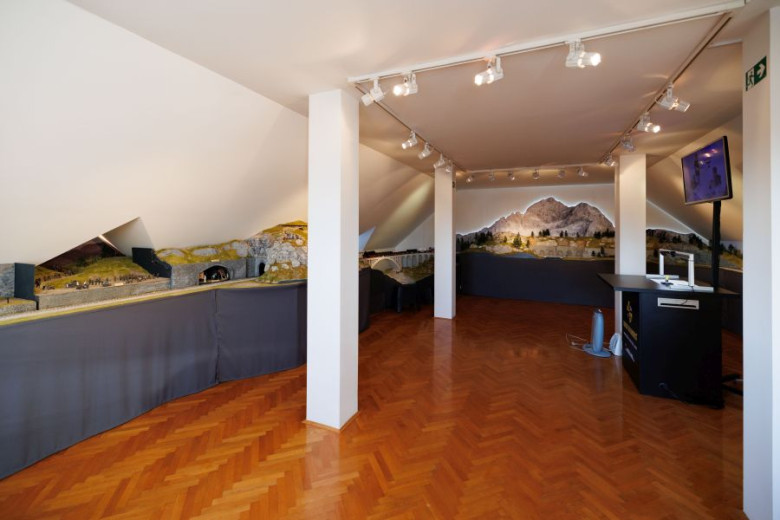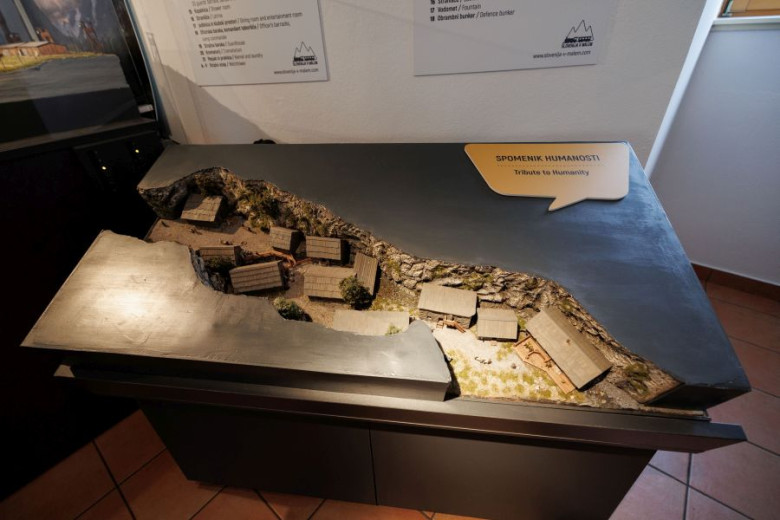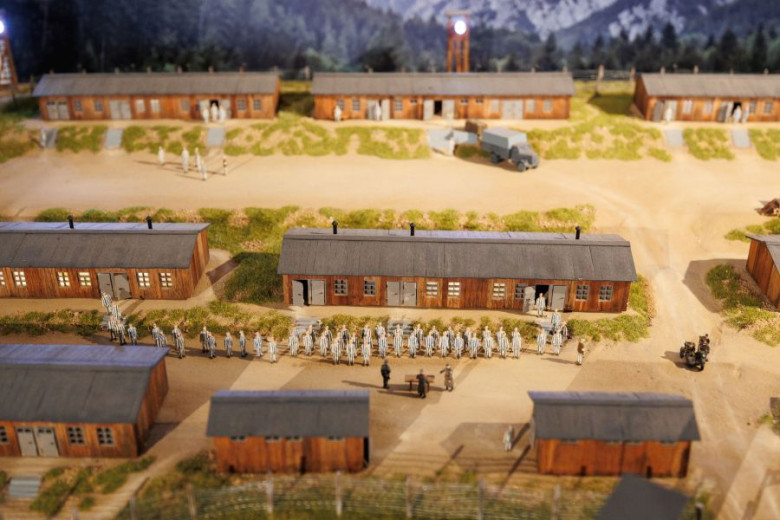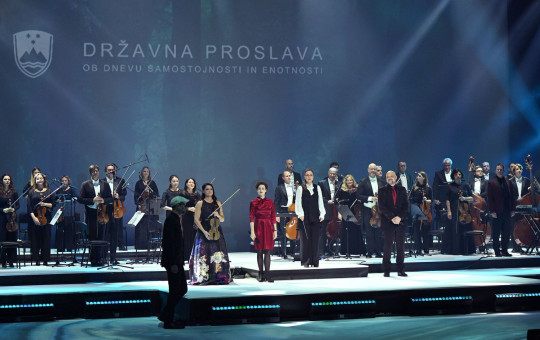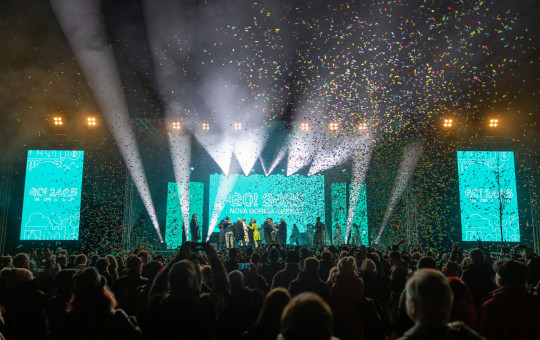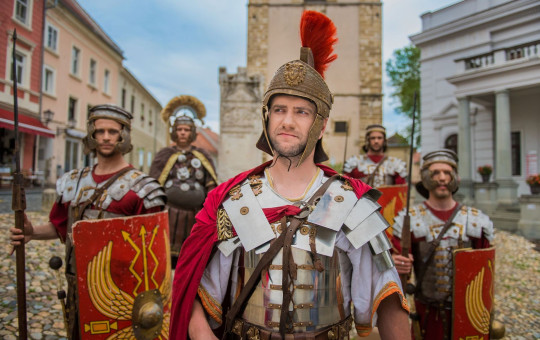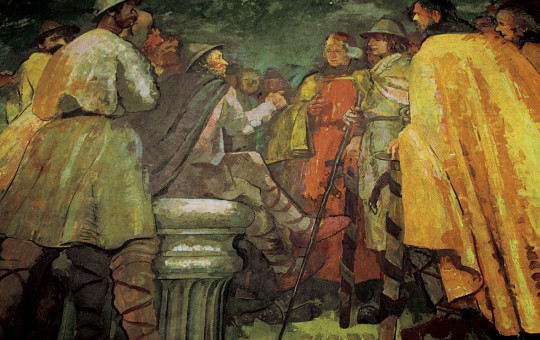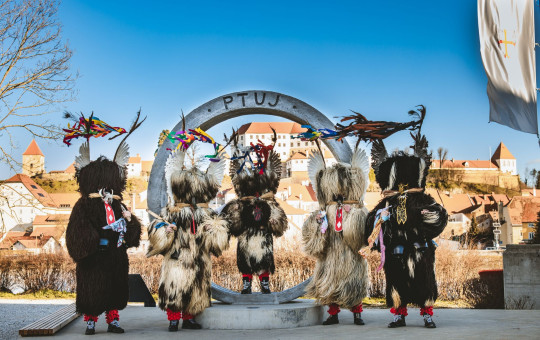Date: 24. January 2025
Time to read: 1 min
In addition to its natural beauty, Slovenia also boasts a fascinating history. Preserving the memory of pivotal and nationally significant events is important for the self-confidence of every nation. The exhibition Slovenia in Miniature takes you on a journey from prehistory to the latest turning points in Slovenia’s history. The exhibition is on display at Šenčur Museum near Kranj.
The models showcase human evolution according to Darwin's theory, the Mammoth found at Nevje near Kamnik, the pile-dwelling settlements of Stara Gmajna, France Prešeren's native village of Vrba, life in Vrhnika at the time of Ivan Cankar, the Ljubelj concentration camp, the Franja partisan hospital, the time of declaration of Slovenia’s independence, the Roman Emona, the erection of the Aljaž Tower atop Mount Triglav, the Solkan Bridge, the Isonzo Front and the battle of Caporetto (present-day Kobarid), the key events affecting the Slovenian territory in the period between the First and Second World Wars, the beginning of the Second World on Slovenian soil.
And also path to independence of Slovenia, accession to the European Union, technological progress in cities, firefighting and much more.
-
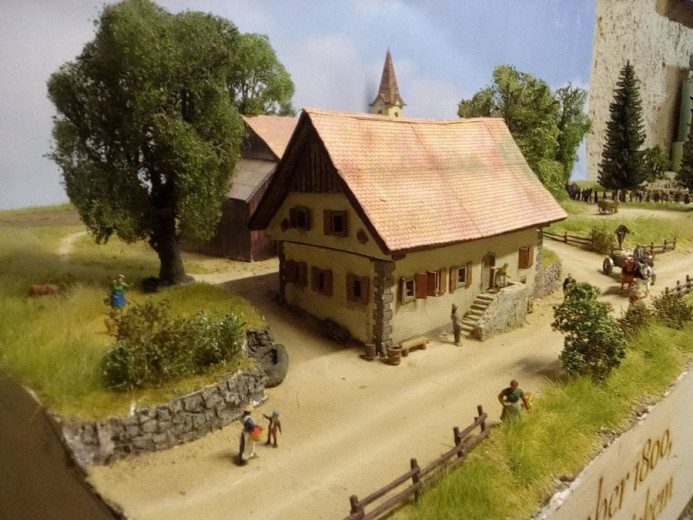 The model of France Prešeren depicts the poet's birthplace, where he lived until the age of eight, another showing his adult life when he was unhappily in love with Julija Primic, and a third depicting the poet's funeral in Kranj.
The model of France Prešeren depicts the poet's birthplace, where he lived until the age of eight, another showing his adult life when he was unhappily in love with Julija Primic, and a third depicting the poet's funeral in Kranj.
-
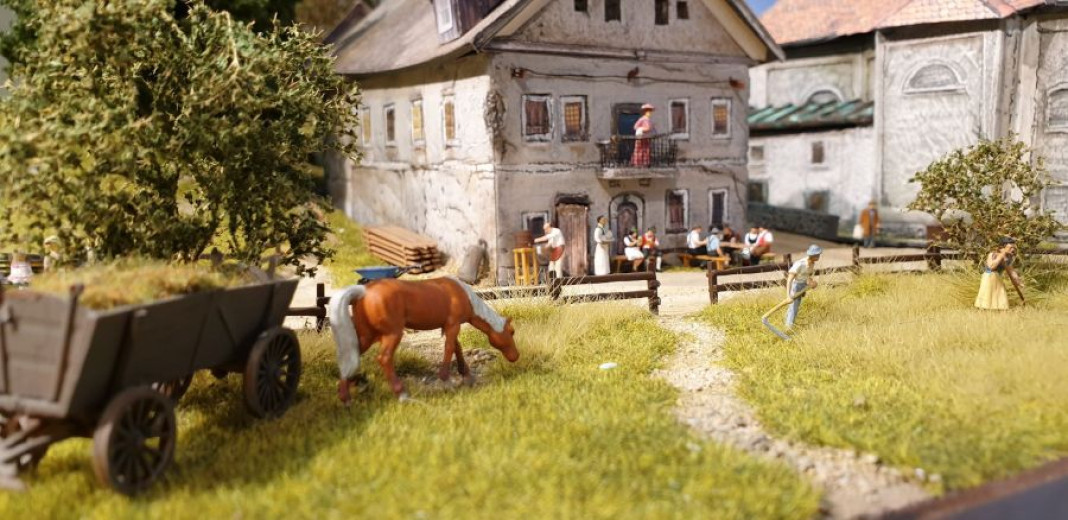 Ivan Cankar is Slovenia’s greatest writer and dramatist. His literary works often describe his birthplace, Vrhnika.
Ivan Cankar is Slovenia’s greatest writer and dramatist. His literary works often describe his birthplace, Vrhnika.
When passion for modelling meets history
The author of the exhibition is Igor Grabnar, who has been in this trade since childhood and more seriously since 2012. In 2026, he created the first historical model, which depicts the life of Slovenia's greatest poet, France Prešeren, in three parts.
Ten models, which Grabnar created in collaboration with various experts, are exhibited on the ground floor of the museum.
Firefighting and agriculture are traditional elements of the exhibition, while the model Evolution depicts human development from Australopithecus to modern, technology dependent, humans. Alongside France Prešeren, the depiction of Ivan Cankar's birthplace is highly admired.
-
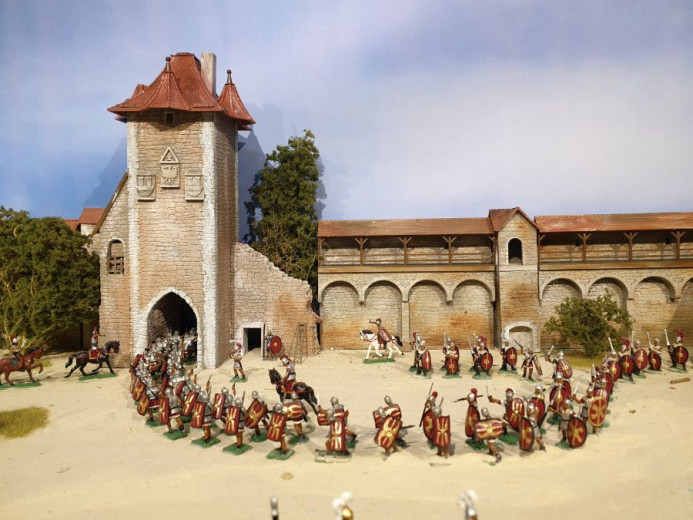 The Romans occupied the territory of present-day Slovenia in the second half of the 2nd century BC, first defeating the tribes in Istria. After seizing the land, they enslaved many people, often recruiting men into their army.
The Romans occupied the territory of present-day Slovenia in the second half of the 2nd century BC, first defeating the tribes in Istria. After seizing the land, they enslaved many people, often recruiting men into their army.
-
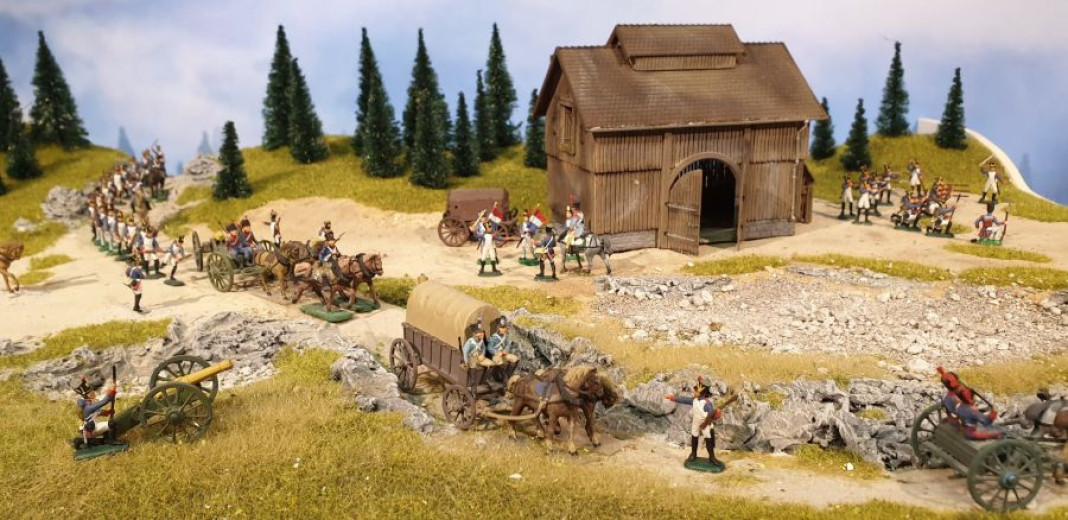 The Illyrian Provinces were established by Napoleon after Austria, defeated in the Battle of Wagram, was forced to cede Carinthia, Carniola, southwestern Croatia, the Military Frontier south of the Sava River, Gorizia, Trieste, and Istria to France. The Illyrian Provinces were formally not part of the French Empire but were entirely subordinate to it. Ljubljana was their capital.
The Illyrian Provinces were established by Napoleon after Austria, defeated in the Battle of Wagram, was forced to cede Carinthia, Carniola, southwestern Croatia, the Military Frontier south of the Sava River, Gorizia, Trieste, and Istria to France. The Illyrian Provinces were formally not part of the French Empire but were entirely subordinate to it. Ljubljana was their capital.
All models are rich in intricate details and visitors will spend some time to admire each one. Each model is accompanied by a description of the time, place, and significant historical figures.
Let the exquisite details take you through time and teach you something new. Learning history can sometimes be unappealing to children, but a visit to the Short History of Great Slovenia will certainly spark their interest.
-
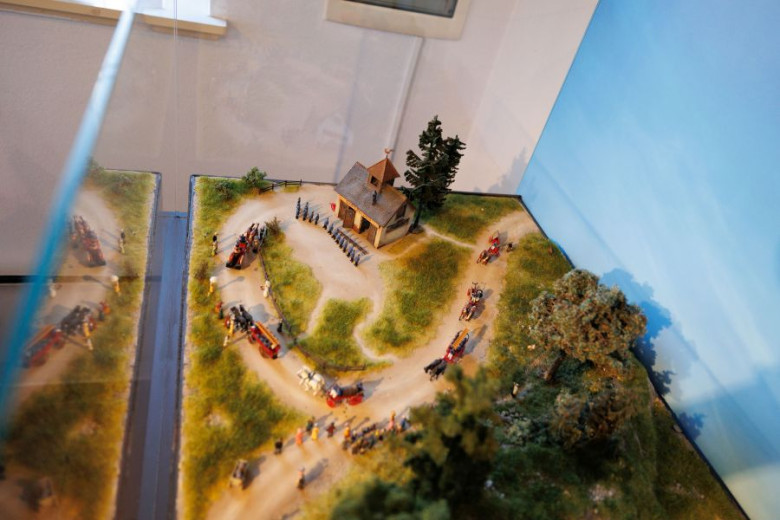 Firefighting has a long tradition in Slovenia and is a highly developed humanitarian activity.
Firefighting has a long tradition in Slovenia and is a highly developed humanitarian activity.
-
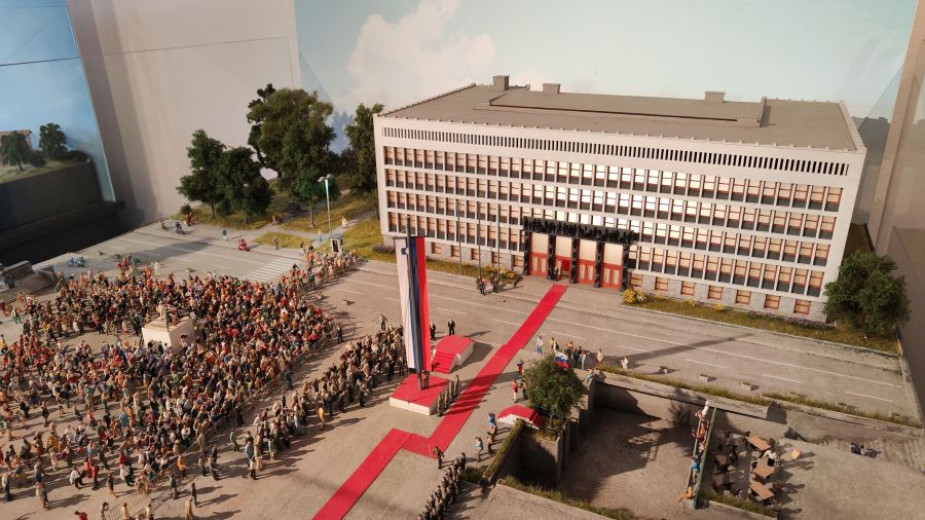 Slovenia commemorates June 25, 1991, when it formally declared independence. On this day, the Declaration of Independence of Slovenia and the Fundamental Constitutional Charter on the Sovereignty and Independence of Slovenia were adopted, officially proclaimed the following day.
Slovenia commemorates June 25, 1991, when it formally declared independence. On this day, the Declaration of Independence of Slovenia and the Fundamental Constitutional Charter on the Sovereignty and Independence of Slovenia were adopted, officially proclaimed the following day.

